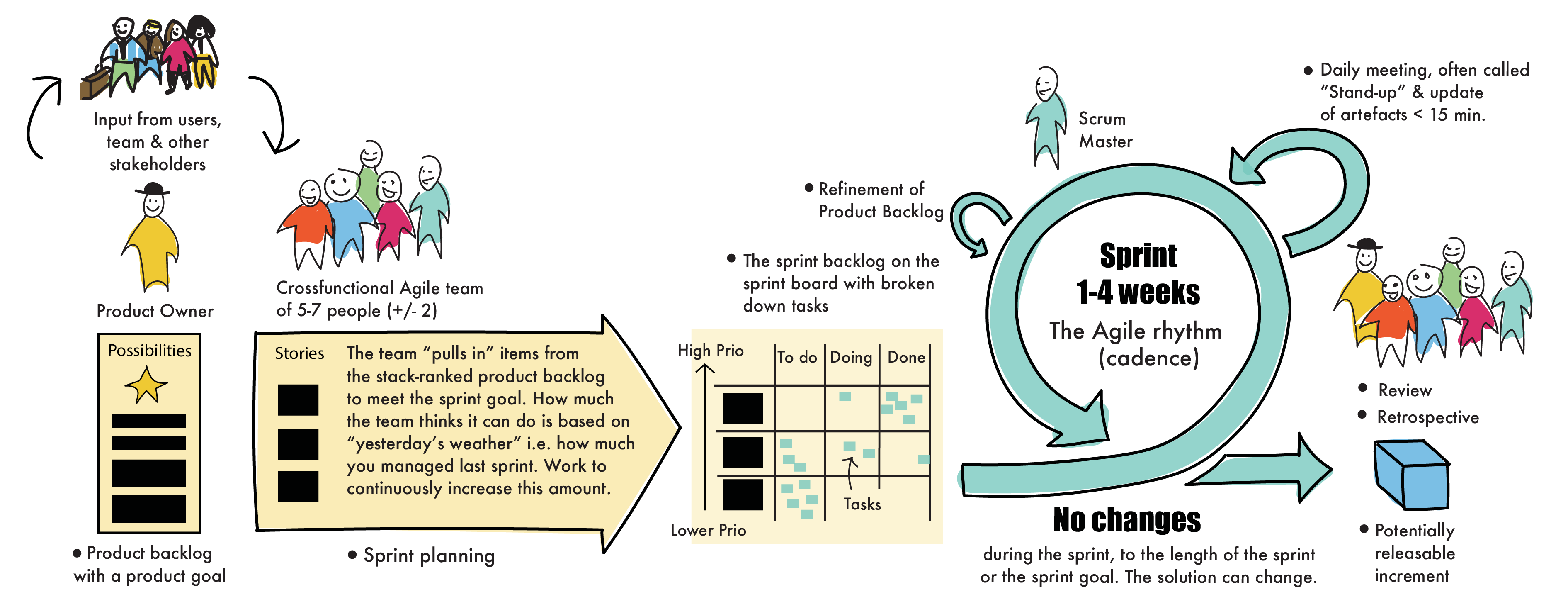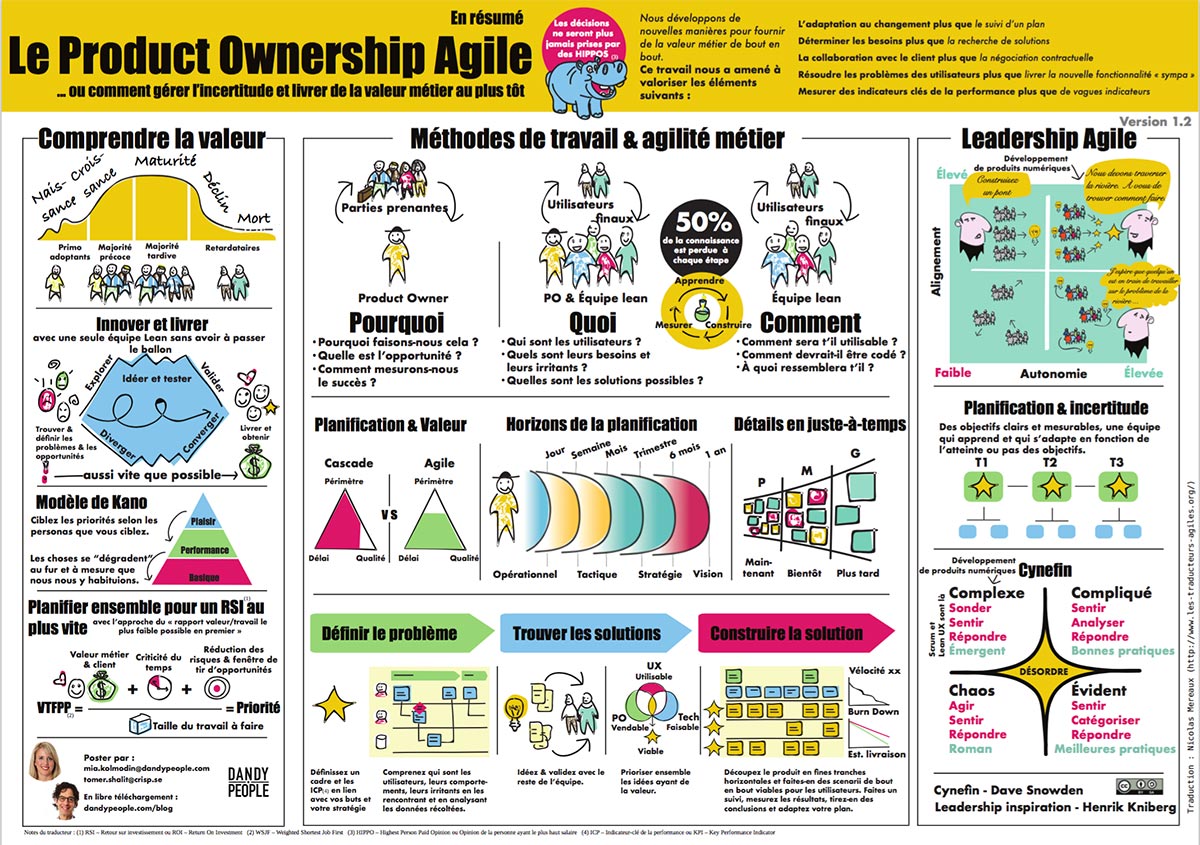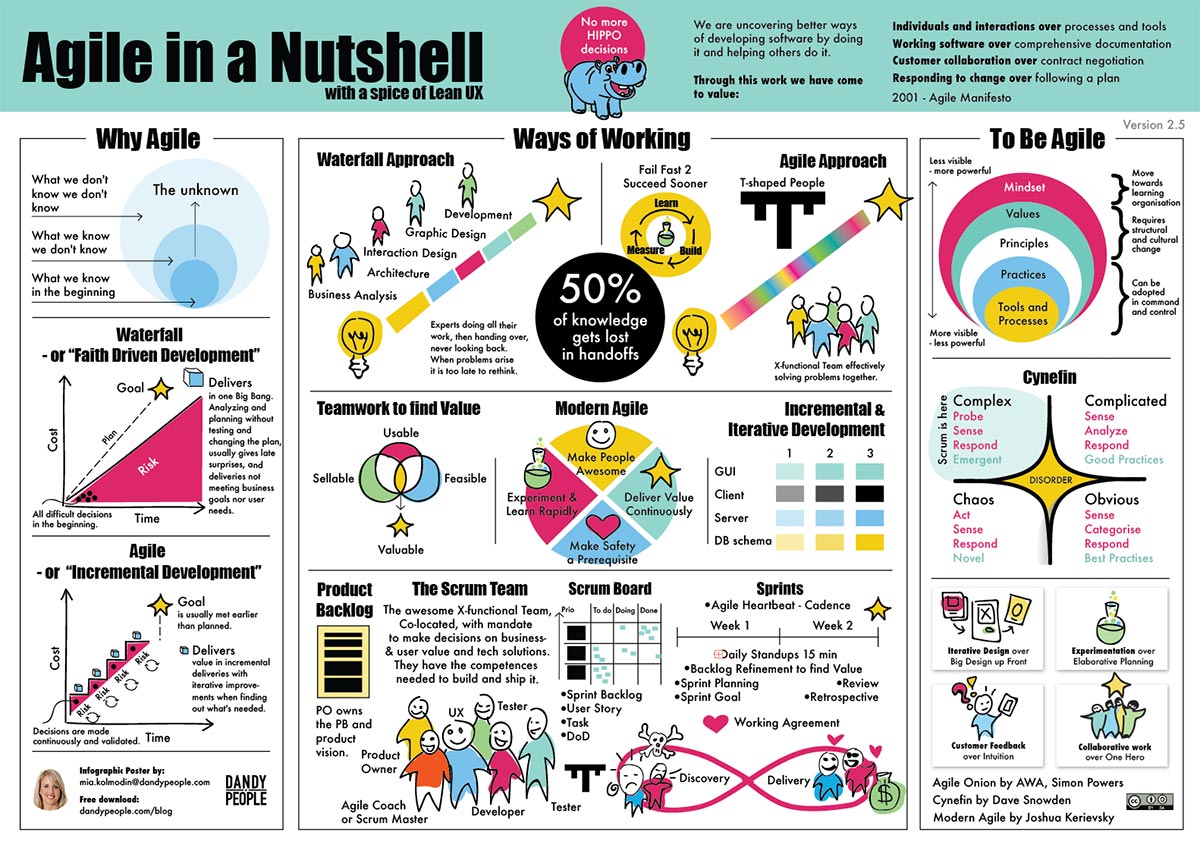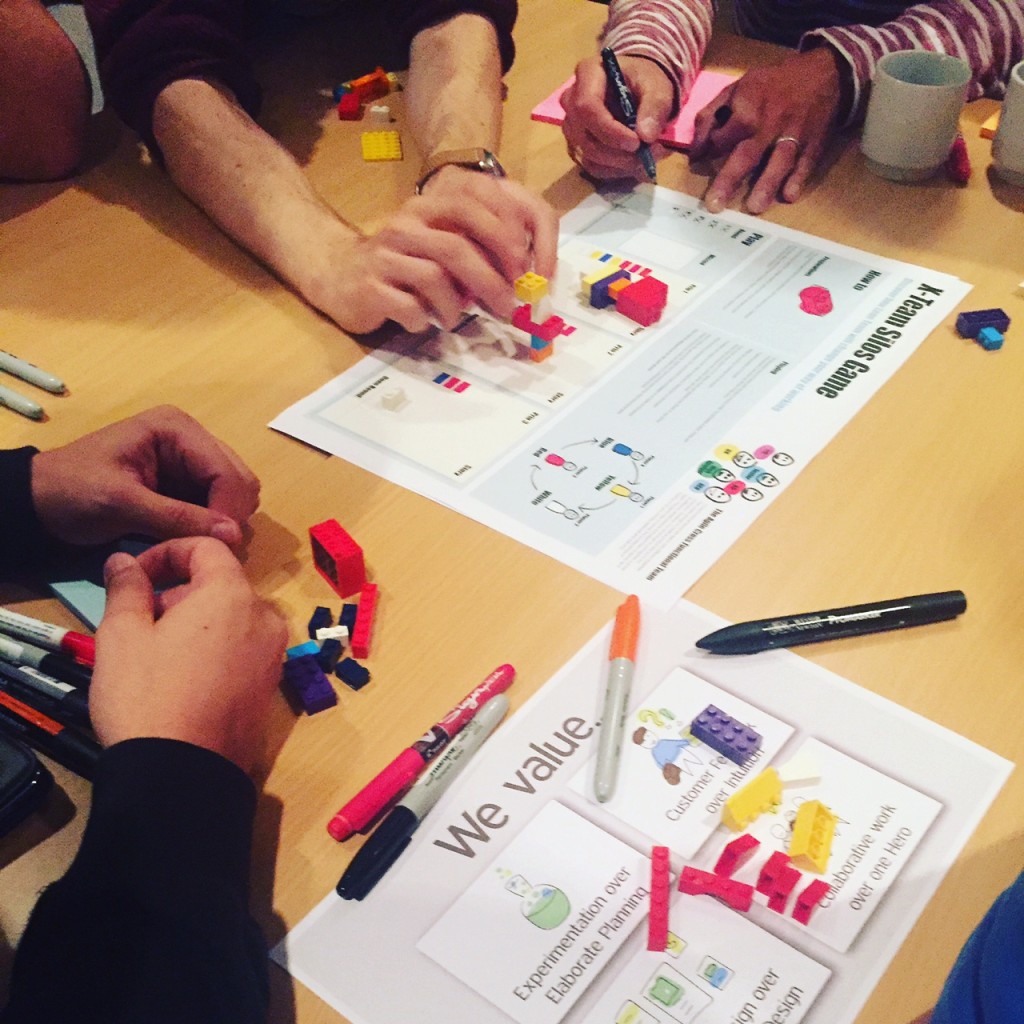This is a translation of a prior post in Swedish. Se originalinlägget på svenska här >
This post is about the most common way of working for an agile team, namely the Scrum framework. Scrum is a minimal, lightweight framework that gives good support for both new teams and more experienced teams, as well as for organisations with many teams, under the name Scrum at Scale. In this post I show the basics of Scrum, but if you are interested to know more and get the latest correct updates, I recommend the official Scrum Guide >
Scrum is based on empiricism and lean thinking. It provides good support to deliver solutions to complex problems where we cannot predict whether the solution will produce the effect we want. It has become by far the most popular Agile way of working over the past 20 years.
The team can work within software development, product development, or as managers in any sort of organisation. Even functions like HR can benefit greatly from this way of working, or why not healthcare or construction projects? Anyone who works with complex problems where they cannot predict if the solution will achieve the desired result, and cannot plan more than one week in advance, will benefit from working this way of working.
Download the poster on Agile working for teams in a nutshell in English as high resolution PDF.
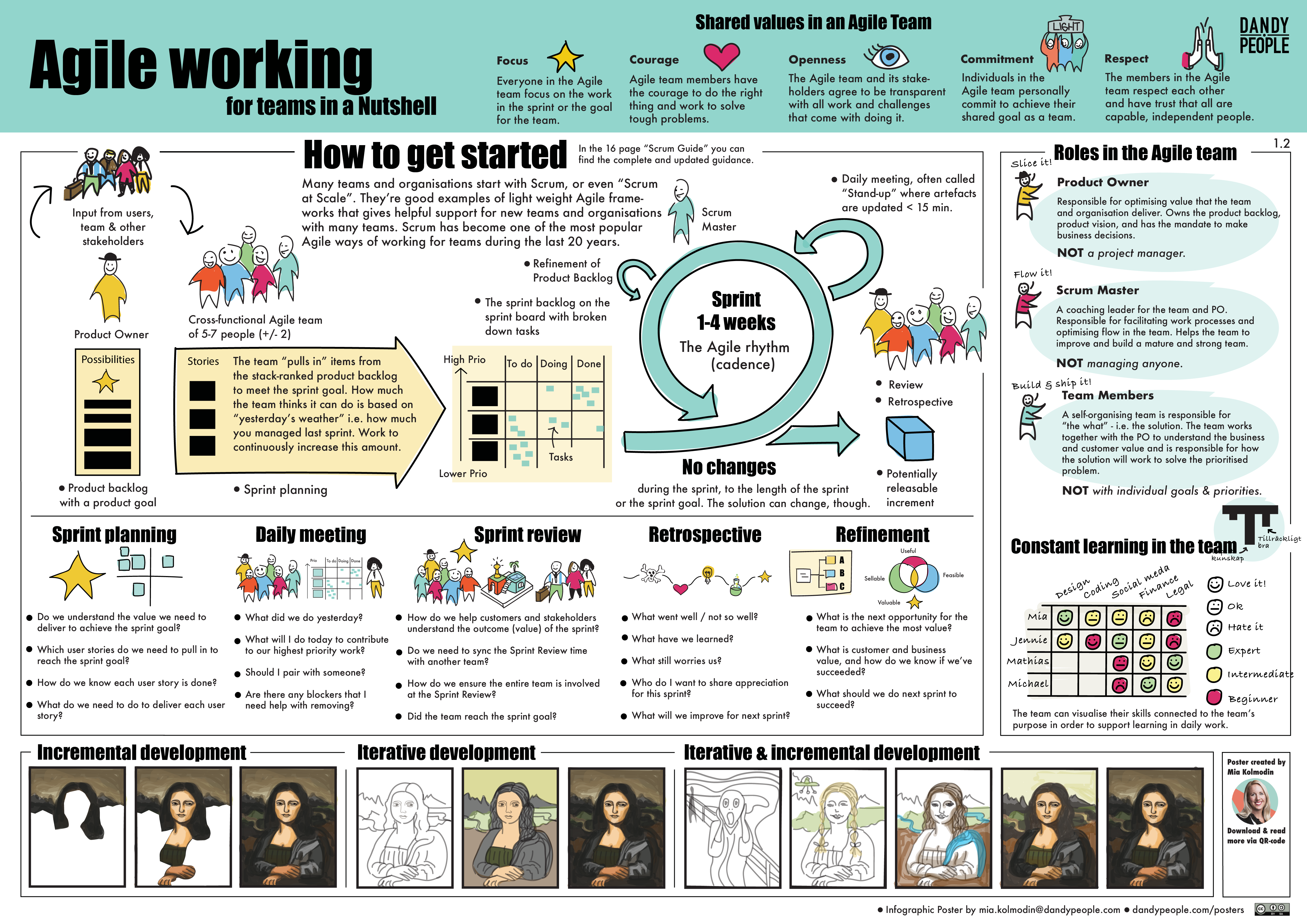
Share Values in the Agile Team
The 5 Scrum values give the team the conditions needed to build a high performing team. If these values are not lived by the team, they will not be able to build and maintain an Agile approach either. Process alone will not bring a team all the way to agility.

Focus
All in the Agile team focus on the work in the sprint or the goal for the team.
Courage
Agile team members have the courage to do the right thing and work to solve tough problems.
Openness
The Agile team and its stakeholders agree to be transparent with all work and challenges that come with doing it.
Commitment
Individuals in the Agile team personally commit to achieve their shared goal as a team.
Respect
The members in the Agile team respect each other and have trust that all are capable, independent people.
Agile way of working for teams
The process is simple and has few elements and rules, as well as only 3 roles; Product Owner, Scrum Master and Team Member. Regardless of what the team is working on, these roles are used, but depending on what the team’s mission is, the team members have different competencies (more on that below).
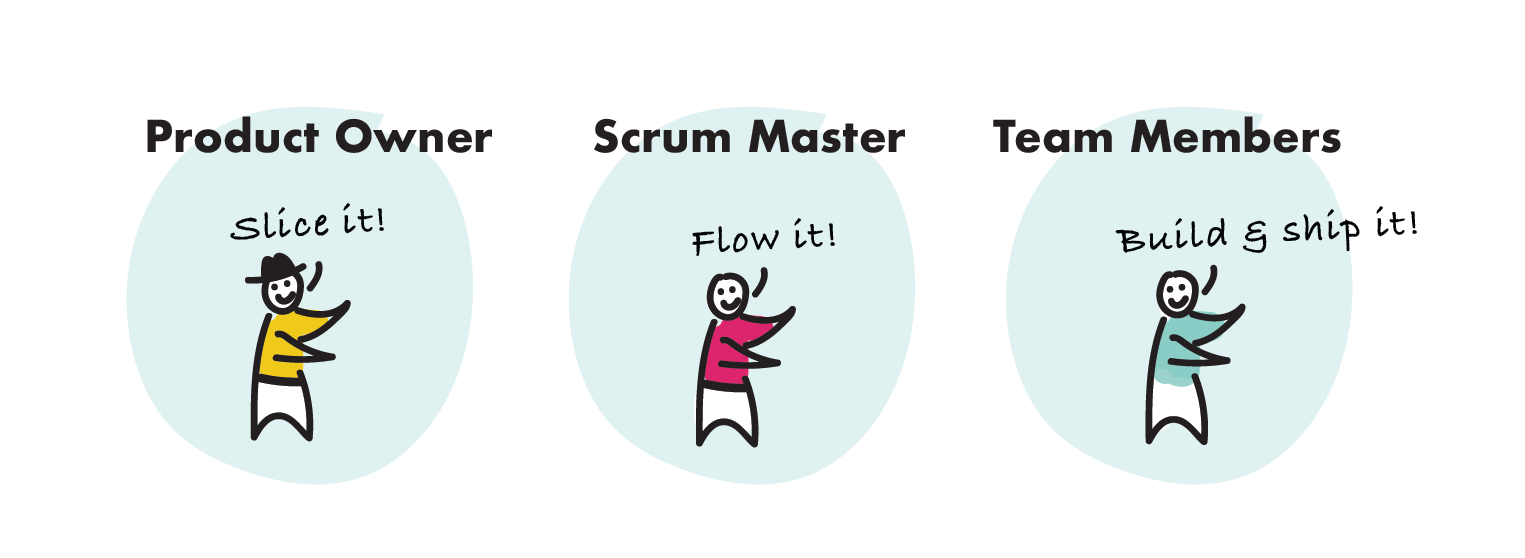
Product Owner
Responsible for optimising value that the team and organisation deliver. Owns the product backlog, product vision, and has the mandate to make business decisions. NOT a project manager.
Scrum Master
A coaching leader for the team and PO. Responsible for facilitating work processes and optimising flow in the team. Helps the team to improve and build a mature and strong team. NOT managing anyone.
Team Members
A self-organising team is responsible for “the what” – i.e. the solution. The team works together with the PO to understand the business and customer value and is responsible for how the solution will work to solve the prioritised problem. NOT with individual goals and priorities.
